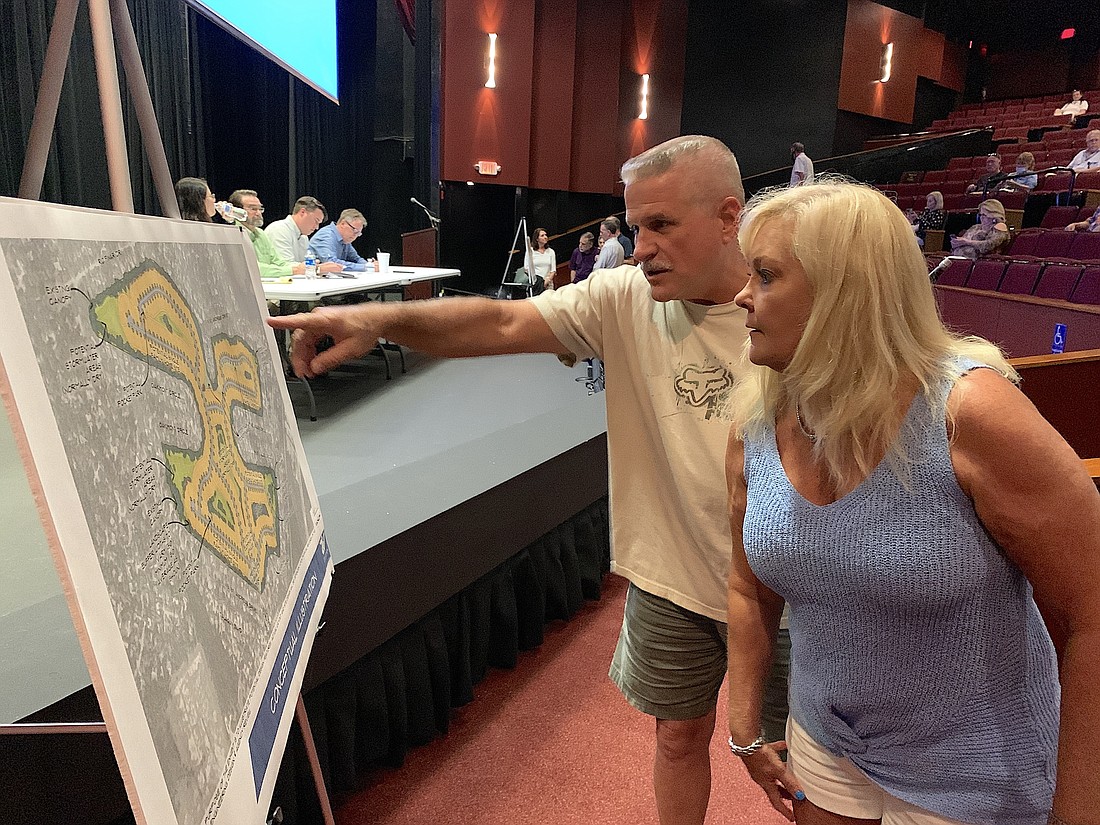- December 15, 2025

After many people criticized the concept that 300 homes could be built on the former Tomoka Oaks Golf Course, another resident asked how many homes could legally be built there. The answer, 645, elicited gasps of disbelief from the audience on July 15, in a nearly packed auditorium at the Ormond Beach Performing Arts Center.
Cobb Cole attorney Rob Merrill, representing the developers, reminded the residents that the conceptual plan presented at the meeting was preliminary: The lot size of 70 feet by 140 feet is not final, and neither is the number of homes, nor the layout.
“This is a starting point for conversation,” he said. “So if there’s something you hate about it, don’t hate it too much, because it could go away.”
Many attendees said they lived in nearby neighborhoods, Tomoka Oaks and The Trails, which were built in the 1970s and 1980s. One resident called the plan "insane," another said it was "ugliness." Others praised the developer for sharing information above and beyond what was required.
Several comments showed that residents are concerned about the traffic. Engineer Sans Lassiter said the plan was to have one entrance/exit from the proposed development onto Nova Road, which is maintained by the state. A study has shown, he said, that a traffic signal is already warranted at Nova and Tomoka Oaks.
“I don’t think this development is moving forward without a signal,” Lassiter said. He added, “We’re anticipating that the city will require us to look at much more than just the access point to Nova Road.”
Lassiter suggested that traffic should not impact The Trails to a great degree, but he said modeling was being done to analyze the issue further.
The development will likely not be gated and likely will have its own homeowners association.
The developer hopes to build houses closer to the interior streets, with larger backyards and buffers, Merrill said. “Pocket parks” would add to the walkability of the new neighborhood.
Tree surveys are being conducted by Zev Cohen and Associates. Because the golf course land is at a higher elevation than most developments, fill dirt will not be needed, meaning that many more trees can be preserved than is typical.
Some residents asked if the property, which was purchased for about $2.6 million by Carl Velie, Ray Barshay and a third partner, could be purchased again by residents to stop the development altogether. Merrill said the property was not for sale.
Another resident asked the developer to consider innovative alternatives, such as an “agrihood” — a small farm surrounded by larger homes — rather than hundreds of average-sized homes.
The meeting on July 15 was the second of three to take place before submitting plans to the city for approval.
The third meeting, which has not yet been scheduled, is the first that would actually be required by the city of Ormond Beach; the first two were done as a goodwill gesture to provide transparency and solicit feedback.
“We are purposely not trying to work in the dark,” said Zev Cohen and Associates President Dwight Durant.
After the third meeting, the developer would make an application to the city; after staff input, the development would go to the Planning Board for approval, and then two votes by the City Commission.